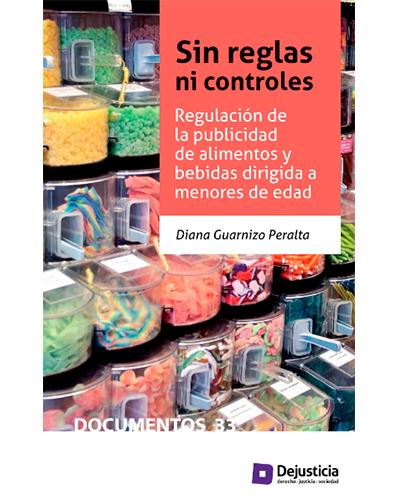Referencia
1.Universidad Pontificia Javeriana. Marketing de alimentos y bebidas no saludables dirigido a la población infantil. Bogotá; 2017 [cited 2019 Aug 30].
2. Kelly B, Vandevijvere S, Ng S, Adams J, Allemandi L, Bahena‐Espina L, et al. Global benchmarking of children’s exposure to television advertising of unhealthy foods and beverages across 22 countries. 2019 Apr 11 [cited 2019 May 2];obr.12840.
3. Allemandi L, Castronuovo L, Tiscornia MV, Ponce M, Schoj V. Food advertising on Argentinean television: are ultra-processed foods in the lead? Public Health Nutr. 2018 Jan 26 [cited 2019 Sep 11];21(1):238–46.
4. Luisa Machado M, Mello Rodrigues V, Bagolin do Nascimento A, Dean M, Medeiros Rataichesck Fiates G. Nutritional Composition of Brazilian Food Products Marketed to Children. Nutrients. 2019 May 28 [cited 2019 Sep 11];11(6):1214.
5. Mejía-Díaz, D. M., Carmona-Garcés, I. C., Giraldo-López, P. A., & González-Zapata, L. (2014). Contenido nutricional de alimentos y bebidas publicitados en la franja infantil de la televisión colombiana. Nutrición Hospitalaria, 29(4), 858-864.
6. Centers for Disease Control and Prevention. Childhood Obesity Causes & Consequences 2015; Accessed August 2, 2016.
7. Swinburn BA, Sacks G, Hall KD, et al. The global obesity pandemic: shaped by global drivers and local environments. The Lancet. 2011;378(9793):804-814
8. Harris JL, Brownell KD, Bargh JA. The Food Marketing Defense Model: Integrating Psychological Research to Protect Youth and Inform Public Policy. Soc Issues Policy Rev. 2009;3(1):211-271.
9. Cairns G, Angus K, Hastings G, Caraher M. Systematic reviews of the evidence on the nature, extent and effects of food marketing to children. A retrospective summary. Appetite. 2013;62:209- 215.
10. Harris JL, Pomeranz JL, Lobstein T, Brownell KD. A crisis in the marketplace: how food marketing contributes to childhood obesity and what can be done. Annu Rev Public Health. 2009;30:211- 225.
11. Kelly B, King M, Lesley, Chapman M, Kathy, Boyland E, Bauman AE, Baur LA. A hierarchy of unhealthy food promotion effects: identifying methodological approaches and knowledge gaps. American journal of public health. 2015;105(4):e86-e95.
12. Robinson TN, Borzekowski DL, Matheson DM, Kraemer HC. Effects of fast food branding on young children’s taste preferences. Archives of pediatrics & adolescent medicine. 2007;161(8):792-797.
13. Sadeghirad B, Duhaney T, Motaghipisheh S, Campbell NR, Johnston BC. Influence of unhealthy food and beverage marketing on children’s dietary intake and preference: a systematic review and meta-analysis of randomized trials. Obes Rev. 2016.
14. Hastings G, Stead M, McDermott L, et al. Review of research on the effects of food promotion to children. London: Food Standards Agency. 2003.
15. Gomez LF, Parra DC, Lobelo F, Samper B, Moreno J, Jacoby E, Lucumí DI, Matsudo S, Borda C. Television viewing and its association with overweight in Colombian children: results from the 2005 National Nutrition Survey: A cross sectional study. Int J Behav Nutr Phys Act (IJBNPA). 2007;4:41.
16. Munguía, Ana & Tolentino-Mayo, Lizbeth & Théodore, Florence & Vandevijvere, Stefanie. (2020). Nutritional Quality of Hidden Food and Beverage Advertising Directed to Children: Extent and Nature of Product Placement in Mexican Television Programs. International Journal of Environmental Research and Public Health. 17. 10.3390/ijerph17093086.
Referencia:
Red PaPaz. II Estudio de Actitudes, Percepciones y Comportamientos Frente a Políticas Públicas para Proteger el Derecho a la Alimentación Adecuada (Agenda País-2019). Bogotá, D.C; 2020.
















